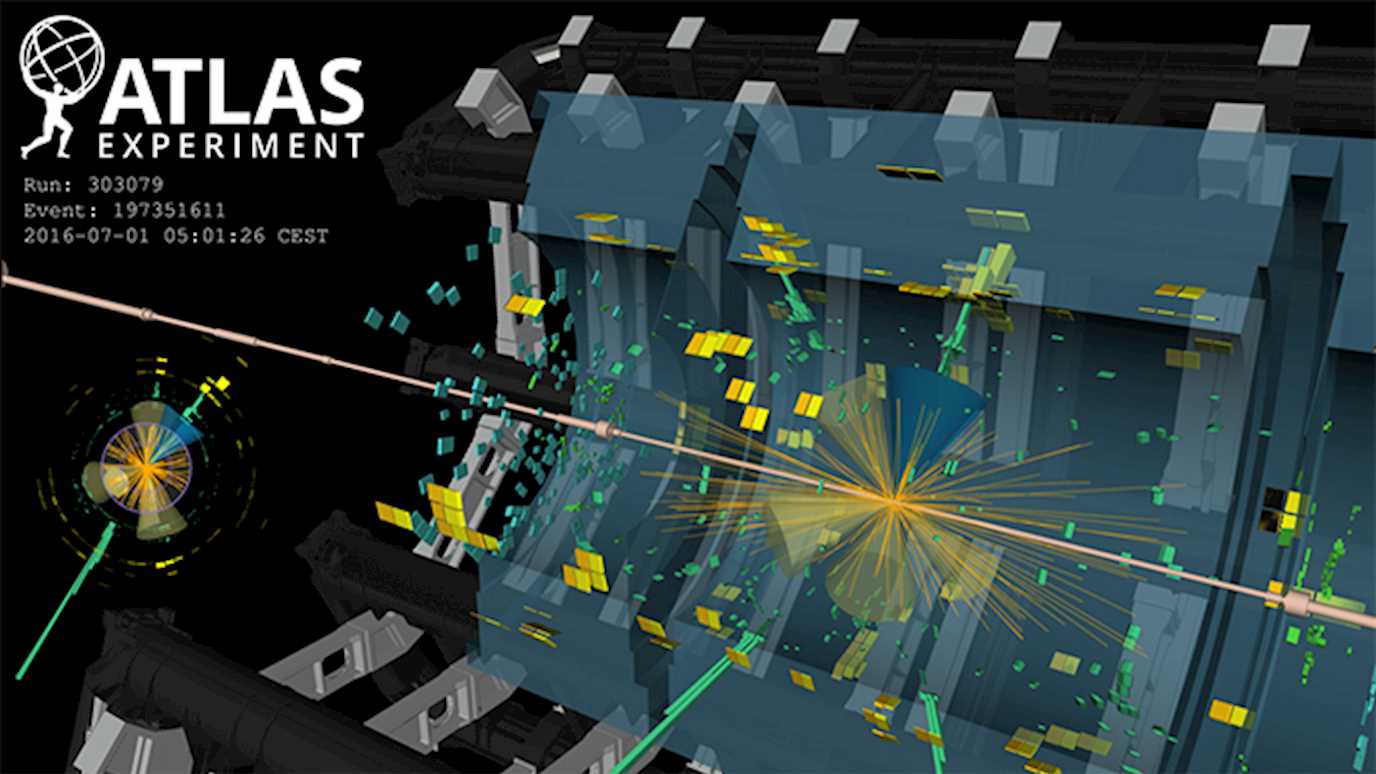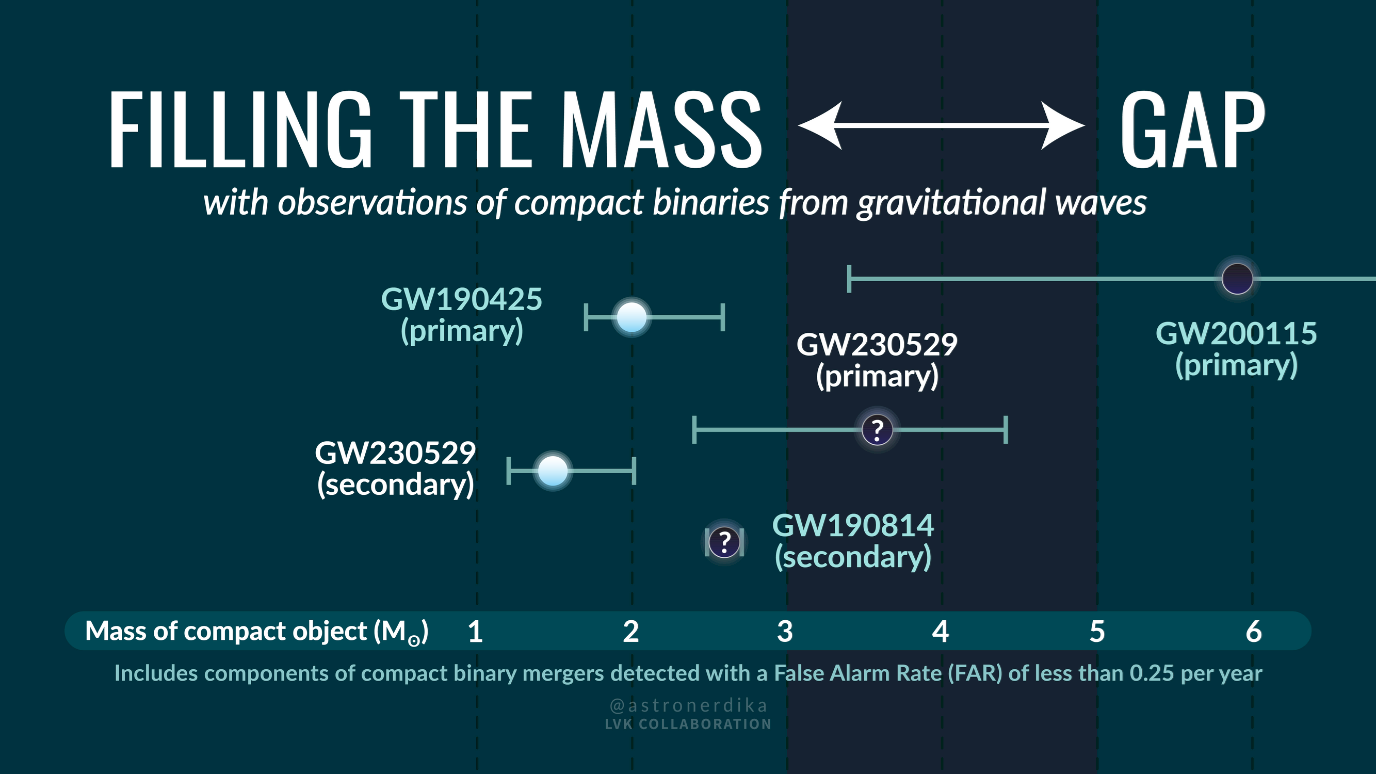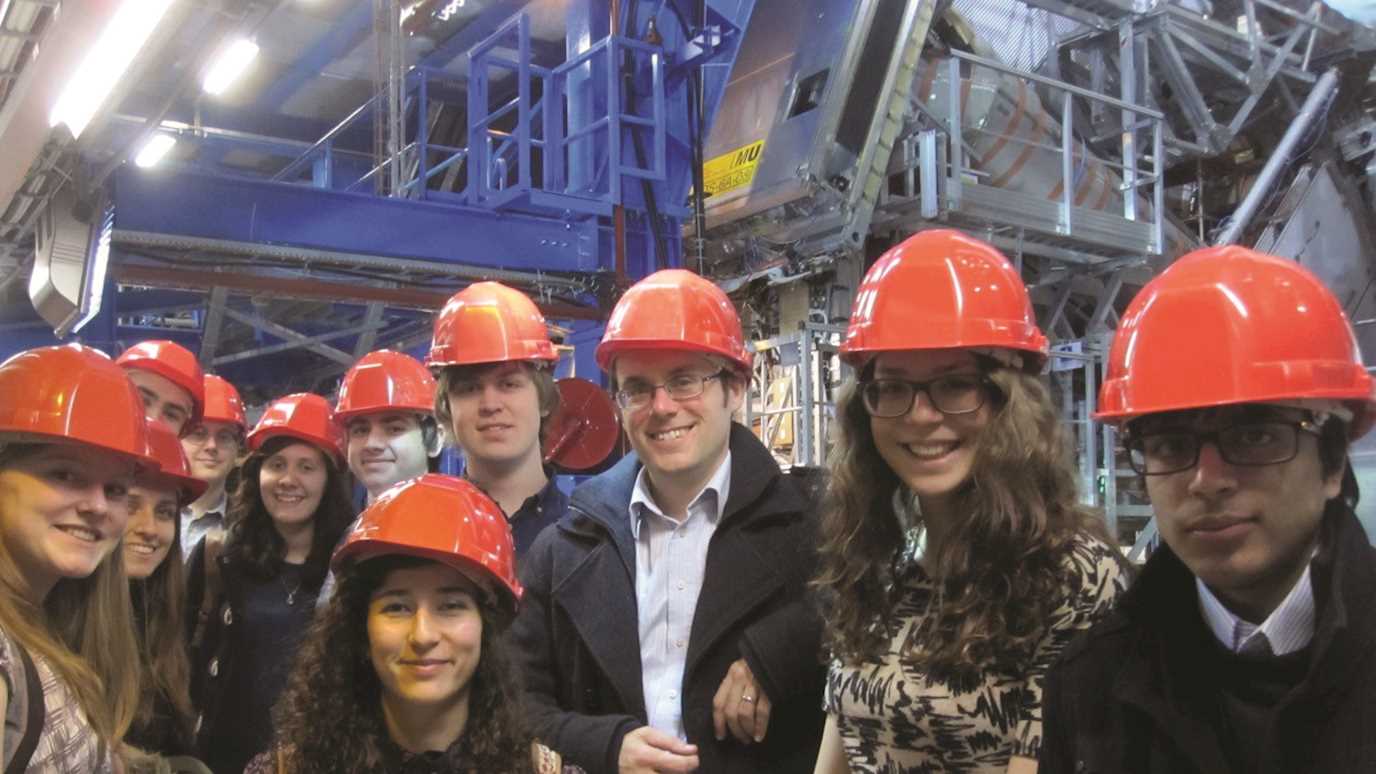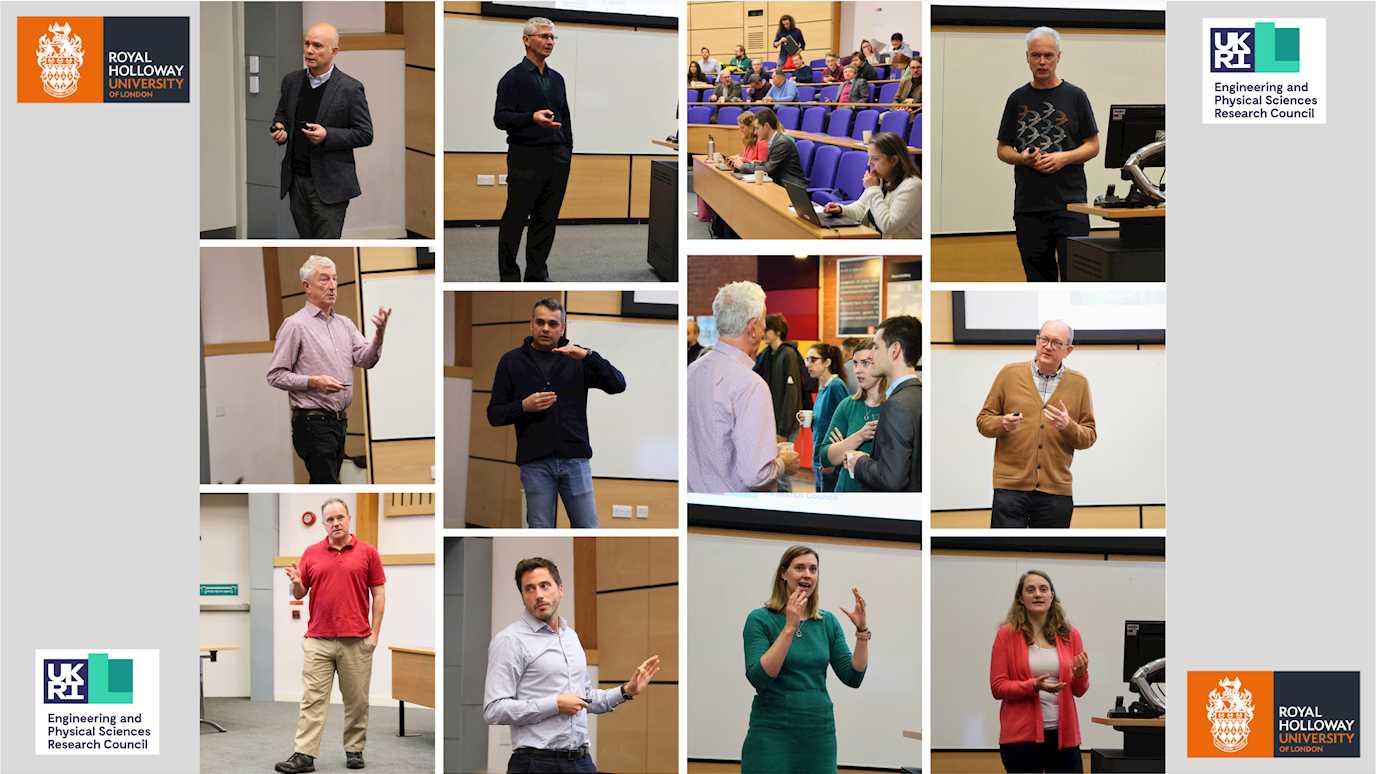New results have been announced this week, from the ATLAS and CMS experiments at CERN, confirming the unambiguous observation of the production of Higgs particles in association with top quarks.

The image above shows a collision recorded in the ATLAS detector, consistent with the “ttH” process. The collision contains two photon candidates from the Higgs particle decay (displayed as green towers in the electromagnetic calorimeter) and six jets of particles (b-jet) shown as yellow (blue) cones. (Image: ATLAS Collaboration/CERN)
A team of physicists in the Centre for Particle Physics at Royal Holloway have made leading contributions to this discovery. The RHUL team are founding members of the ATLAS experiment at the Large Hadron Collider (LHC), and have a long-standing involvement in the search and discovery of the Higgs boson, and in the ongoing detailed study of its physical properties.
The Higgs particle, discovered at CERN in 2012, and the top quark are the two heaviest known elementary particles.
CERN, the European Laboratory for Particle Physics in Geneva, Switzerland, is where the LHC is located. The Large Hadron Collider is an underground "atom-smasher" which collides two beams of protons head-on at extremely high energies. In the debris from these collisions other particles are routinely produced.
The ATLAS and CMS particle detectors at the LHC have, over the years, collected a very large number of collisions, allowing them to detect this extremely rare process - only about 1 in every million million collisions that happen at the heart of the two experiments do contain a Higgs particle and, simultaneously, also a pair of top quarks. This is the so-called “ttH” process.
The Higgs and top particles are very unstable; once they are produced at the LHC, they almost immediately "decay", transforming into other more stable "daughter" elementary particles. A number of different decays are possible for both particles.
The team at Royal Holloway have, for a number of years now, focused on the analysis of the data where the Higgs particle decays into a pair of bottom quarks, and the top quarks decay into bottom quarks, electrons or muons, and a pair of elusive neutrinos.
Prof. Pedro Teixeira-Dias said: "This is a very exciting result. Only now has the strength of the interaction between the Higgs boson and the top quark been measured directly. The observation shows that, out of all the elementary matter particles known, the top quark is the one with the strongest interaction with the Higgs particle, testing a key prediction of the Standard Model of particle physics.”
Profs. Glen Cowan and Pedro Teixeira-Dias have worked on the detection of the ttH process with other team members at RHUL: PhD students Adam Bozson, Ben Sowden, Callum Kilby, David Thomas, Callum Booth, and post-doctoral researchers Ian Connelly, Joshua Thomas-Wilsker and Michele Faucci Giannelli.
The wider RHUL ATLAS team is also a leading player in the Trigger and Data Acquisition System of ATLAS; this system is responsible for the ultra-fast sifting of approximately one billion proton-proton collisions that occur at the LHC every second, and selecting roughly one out of every million to be recorded and analysed later in great detail. The RHUL ATLAS team, led by Dr Veronique Boisvert, is also a major player in other physics areas including the measurement of the properties of top quarks and searches for signs of new physics signatures.
The ATLAS experiment has released a press statement about this result; more details about the research are also available in a scientific briefing. The press release from CERN is also available: “Higgs boson comes out on top”.
























